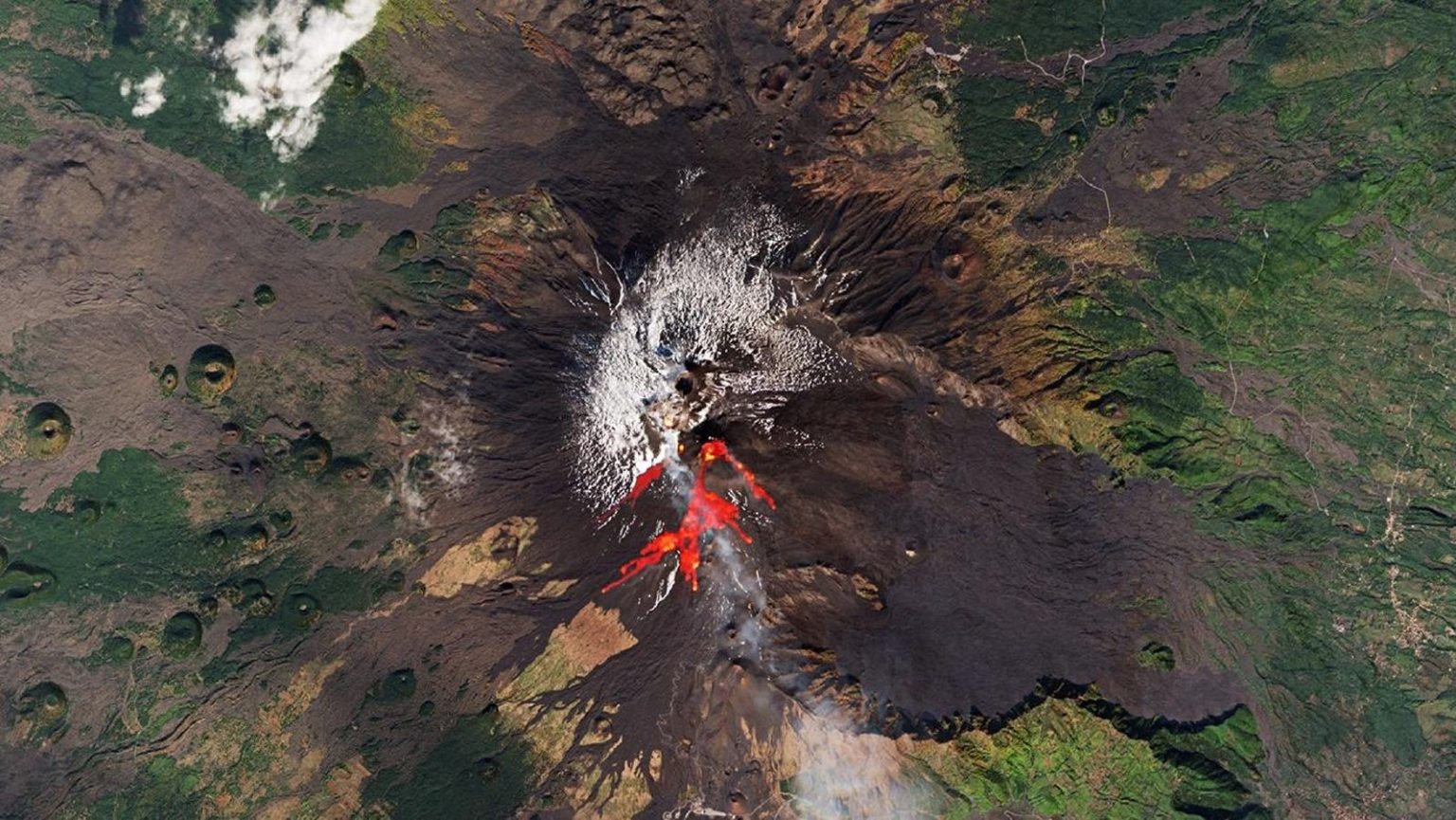Italy’s Mount Etna doesn’t mess around. The volcano erupted on November 12, kicking out lava and ash in a spectacular display of its might. Etna’s eruptions can look impressive from the ground, but eyes up in space give us a very different view of the volcano. A European Space Agency satellite captured Etna from above on Monday, and it’s haunting.
ESA’s Copernicus Sentinel-2 image of Etna was processed to highlight the lava flow, visible as a bright blood-red splotch in the center of the picture. An ash cloud accompanied the lava. The top-down view shows Etna’s snowy cap and dark slopes. Fluffy white clouds dot the edges of the image. The eastern coast of Sicily is to the right. It’s a scenic photo, but it also hints at Etna’s power and shows why scientists monitor the volcano so closely. It’s capable of spewing out lava, ash and dangerous gasses.
The Earth-observing Copernicus Sentinel-2 mission consists of two matching satellites. The orbiters monitor forests, agriculture and oceans and track disasters like earthquakes or volcanic eruptions. “Satellite data can be used to detect the slight signs of change that may foretell an eruption,” ESA said in a statement on November 15. “Once an eruption begins, optical and radar instruments can capture the various phenomena associated with it, including lava flows, mudslides, ground fissures and earthquakes.” This information can be used to give advance warning of an eruption and to help inform disaster relief efforts if needed.
The Smithsonian Institution’s Global Volcanism Program issues reports on Etna’s activities. The report for the second week of November mentioned lava fountains and pyroclastic flow. That’s par for the course for the vigorous volcano. A scroll through reports for recent years shows multiple venting and explosive events.
Etna is one of the most active volcanoes in the world. It’s beautiful, but it’s also potentially dangerous. “Ash and cloud created because of frequent eruptions pose a threat to the nearby city of Catania,” said ESA. Catania is home to over 300,000 people. There were no evacuations due to the Sunday eruption.
ESA’s satellites aren’t the only ones keeping an eye on Etna. The U.S. National Oceanic and Atmospheric Administration has its own system of satellites that monitors Earth. NOAA caught sight of a lingering hot spot during the week.
Etna’s eruption is just one notable example of current volcanic activity. Iceland is preparing for an eruption after earthquake swarms shook the ground around Fagradalsfjall on the Reykjanes Peninsula. Residents of the nearby city of Grindavik have already evacuated. Airlines and travelers are bracing for potential impacts if Fagradalsfjall erupts and releases volcanic ash. Etna also has the ability to disrupt air traffic, but the Catania airport remained open during the volcano’s most recent eruption.
Mount Etna has been active for a long time. Human documentation of the volcano’s exertions dates back to 1500 B.C., according to the Smithsonian. There are no signs that Etna plans to take a break anytime soon. Satellites will continue to monitor the explosive mountain and look for signs of restlessness.
Read the full article here





